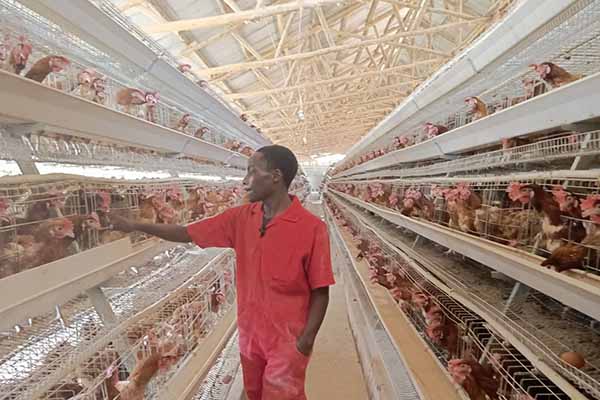Optimizing Livestock Farming in Ghana: Layer Cages for 30,000 Birds
Introduction to Layer Cages for Large-Scale Chicken Farming in Ghana
In the poultry industry, efficient and effective management of farm operations is crucial for profitability. With the growing demand for chicken meat in Ghana, investing in high-capacity layer cages can significantly increase production and reduce costs. This article explores the use of layer cages designed for 30,000 birds, offering insights into their benefits and considerations for large-scale chicken farming.
Understanding Layer Cages for 30,000 Birds in Ghana
Layer cages are a popular choice for commercial poultry farming due to their ability to maximize space and enhance biosecurity. These cages are specifically designed to house a significant number of birds, such as 30,000, in a controlled environment. Here are some key features of layer cages suitable for large-scale chicken farming in Ghana:
– Space Efficiency: Layer cages provide an optimal space for birds, allowing for better growth and development while minimizing waste.
– Biosecurity: The enclosed design of layer cages minimizes the risk of disease transmission and reduces the need for frequent cleaning.
– Ease of Management: Cages simplify the process of feeding, watering, and monitoring the health of the birds.
Benefits of Using Layer Cages for 30,000 Birds in Ghana
Implementing layer cages for 30,000 birds in a Ghanaian poultry farm offers several advantages:
– Increased Production: Layer cages enable farmers to produce more eggs within a smaller area, optimizing land use and reducing transportation costs.
– Cost-Effective: The high-density arrangement of layer cages helps in reducing feed and labor costs, contributing to overall profitability.
– Healthier Birds: Layer cages create a controlled environment, reducing the risk of disease outbreaks and ensuring better bird health.
Key Considerations for Layer Cages in Ghana
Before investing in layer cages for 30,000 birds, consider the following factors:
– Bird Species: Ensure that the chosen layer cages are suitable for the specific bird species you plan to raise.
– Local Regulations: Familiarize yourself with Ghana’s poultry farming regulations to ensure compliance.
– Capacity Planning: Evaluate your farm’s current and future production capacity to determine the appropriate number of layer cages.
Case Study: A Successful Layer Caging System in Ghana
A Ghanaian poultry farm successfully implemented layer cages for 30,000 birds, achieving the following results:
– Increased Production: The farm experienced a 20% increase in egg production within the first year.
– Cost Reduction: The farm saw a decrease in feed and labor costs by 15%.
– Healthier Birds: The reduced disease transmission led to a lower mortality rate and better overall bird health.
Conclusion
Investing in layer cages for 30,000 birds in Ghana can significantly improve your poultry farm’s efficiency and profitability. By considering the benefits and key factors involved, you can make an informed decision that aligns with your farm’s needs.
For more information on layer cages for 30,000 birds and to obtain a free poultry farm design and equipment quote, please feel free to leave a comment below or contact us directly.





